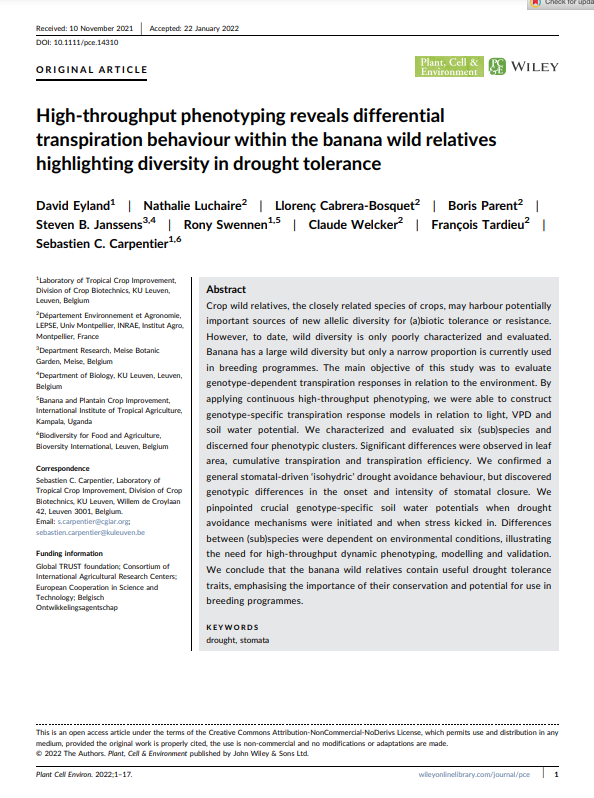Crop wild relatives, the closely related species of crops, may harbour potentially important sources of new allelic diversity for (a)biotic tolerance or resistance.However, to date, wild diversity is only poorly characterized and evaluated. Banana has a large wild diversity but only a narrow proportion is currently usedin breeding programmes. The main objective of this study was to evaluategenotype‐dependent transpiration responses in relation to the environment. By applying continuous high‐throughput phenotyping, we were able to constructgenotype‐specific transpiration response models in relation to light, VPD andsoil water potential. We characterized and evaluated six (sub)species anddiscerned four phenotypic clusters. Significant differences were observed in leafarea, cumulative transpiration and transpiration efficiency.
We confirmed ageneral stomatal‐driven‘isohydric’drought avoidance behaviour, but discoveredgenotypic differences in the onset and intensity of stomatal closure. We pinpointed crucial genotype‐specific soil water potentials when droughtavoidance mechanisms were initiated and when stress kicked in. Differences between (sub)species were dependent on environmental conditions, illustrating the need for high‐throughput dynamic phenotyping, modelling and validation. We conclude that the banana wild relatives contain useful drought tolerancetraits, emphasising the importance of their conservation and potential for use inbreeding programmes.
Eyland, David; Luchaire, Nathalie; Cabrera‐Bosquet, Llorenç; Parent, Boris; Janssens, Steven B.; Swennen, Rony; Welcker, Claude; Tardieu, François; Carpentier, Sebastien C.

